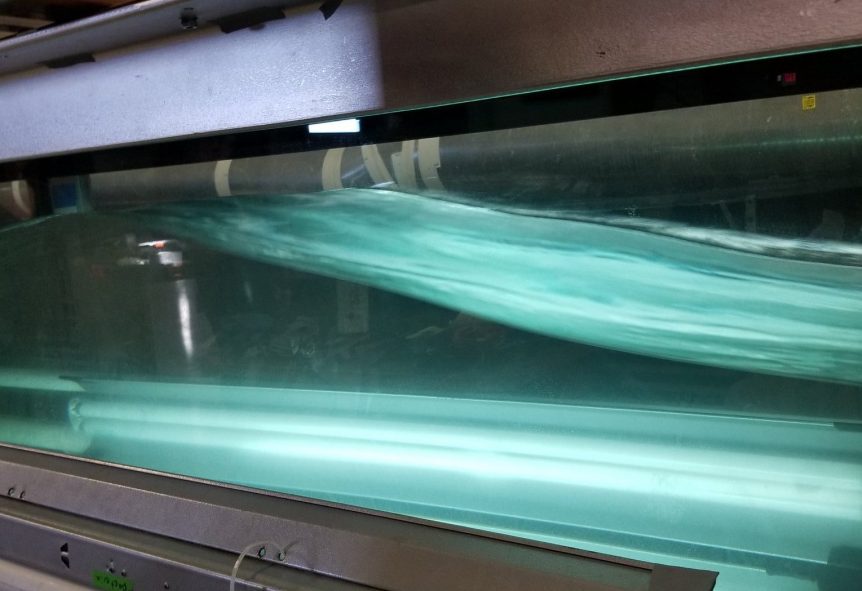SeaSCAPE (Sea Spray Chemistry And Particle Evolution) 2019 is ramping up this week! As you look around the Hydraulics Laboratory “H-Lab” at UC San Diego’s Scripps Institution of Oceanography, you will find NSF CAICE researchers working hard to set up and calibrate their instruments for summer long experiments. You can feel the excitement! The collaborative team of researchers will soon fill the glorious 33-meter-long wave channel with seawater (see video of waves with the test waters, courtesy of CAICE researcher Prof. Betsy Stone at University of Iowa), and sampling will start next week and last all summer. Bulk seawater, sea surface microlayer (SSML), and sea spray aerosol (SSA) will be collected and measured around the clock, as the crashing waters within the wave tank experiences blooms of biological activity similar to that found in open oceans and seas.
For our group, this is a key chance to test how these biological blooms impact the physical chemical phase of SSA. We will take the samples back to our laboratory at the University of Minnesota to use custom build microfluidic (lab-on-a-chip) platforms with on-chip temperature control, to study water uptake and ice nucleation of these sea spray waters and aerosols. In collaboration with the Prather group at UC San Diego, we recently published work on multistep phase transitions that can occur in samples of SSML samples spiked with an organic acid common in the aerosol. In the time-lapsed 11 second video, you will that as the relative humidity drops, the samples evolve through steps of crystallization, liquid-liquid phase separation, a second crystallization, and a second liquid-liquid phase separation. Each of these phase states impacts how the aerosol particle interacts with the environment, reflects and absorbs solar radiation, forms clouds, and nucleates ice crystals in the atmosphere.
DOI: 10.1021/acsearthspacechem.9b00121
We are so excited to collaborate this summer with the many outstanding CAICE groups participating in SeaSCAPE 2019, to collectively tackle the big unanswered questions of SSA properties and dynamics, and their impacts on our climate.
Written by: Associate Professor Cari Dutcher, Mechanical Engineering, University of Minnesota

